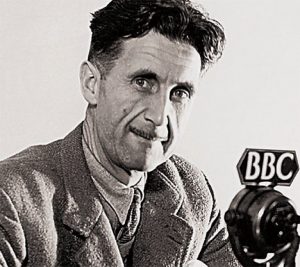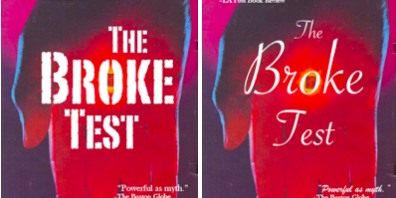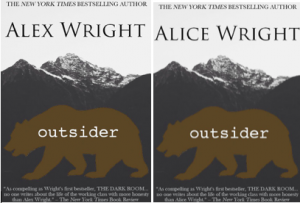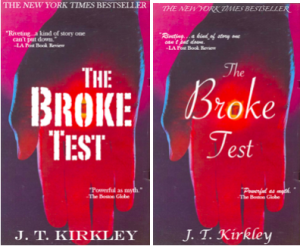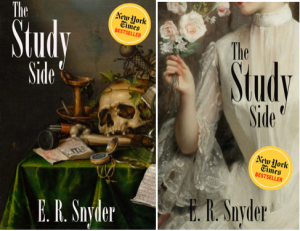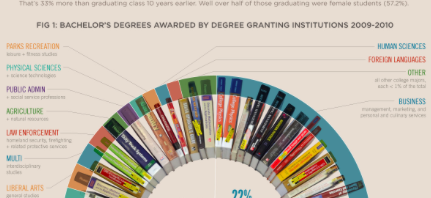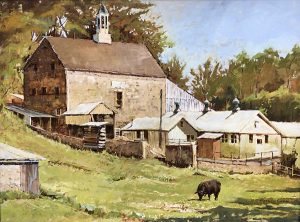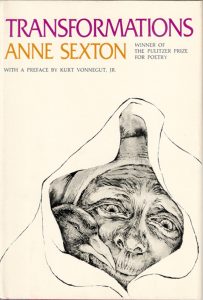By Elyse Ferris
Contemporary political discourse has caused a surge in sales of George Orwell’s groundbreaking dystopian novel 1984. Remembering Big Brother’s brainwashing methods and ‘newspeak,’ Orwell readers connected aspects of the book to Kellyanne Conway’s comments about “alternative facts” following President Trump’s inauguration. The discussion of ‘alternative facts’ and the comeback of 1984 also call to mind interpretations of Orwell’s book in general, as well as the seemingly contradictory points of his ideology.
I first read George Orwell’s 1984 for a high school English class, and I was entranced. I recognized how aspects of the novel might have inspired contemporary literature for younger audiences, such as Lois Lowry’s The Giver, or other series like The Hunger Games, Maze Runner, and Divergent. I tried to identify a common significance between these examples of dystopian literature. I came to think that some of these books were made almost exclusively for entertainment purposes, but others send a stronger message. What does dystopian literature (particularly that which includes a totalitarian state) imply about the reach of government? To what extent did Orwell intend for 1984 to be a warning?
I think I misinterpreted 1984 to some degree the first time I read it. I identified what appeared to be contradictions not only within the story (such as Big Brother’s idea of ‘truth’) but also in the thoughts presented by Orwell himself. I was surprised to learn that he was liberal, indeed a socialist. Initially viewing his work simply as a book with straightforward, anti-government sentiments, I assumed he must have been a zealous pacifist and libertarian. According to the Encyclopedia Brittanica, Orwell began to consider himself a socialist in the 1930’s, but “he was too libertarian in his thinking ever to take the further step – so common in the period – of declaring himself a communist.” For a while, it was almost impossible for me to reconcile these opposing viewpoints. I couldn’t understand how someone could be part libertarian, part socialist.
I still sometimes struggle with the idea, but I think it’s important to remember the political context in which Orwell developed his views and wrote his books.
Britannica says Orwell’s articles and essays during WWII revealed a mixture of his patriotic, libertarian, and decentralized socialist ideas. I believe that 1984, the last novel of his life, points to his vision for a compromise of government’s societal role. Orwell recognized government’s beneficial potential, but hated its invasive potential to control and manipulate. We can speculate that in the aftermath of WWII, Orwell feared a future in which the world was divided up between just a few powers. Maybe it was only natural for one’s mind to wander when observing interactions between the ‘big three’ (Winston Churchill, Joseph Stalin, and Franklin D. Roosevelt) in the early stages of the Cold War. A future of totalitarianism around the globe was not necessarily inevitable, but its potential must have been great enough to inspire aspects of the book. Orwell’s warning in 1984 does not detract from his faith in the state. Overall, I still see the novel as a cautionary tale which warns against the dangers of extreme nationalism, thoughtless submission, and totalitarianism.
In a similar regard, does contemporary dystopian literature aim, above all, to send a message? If so, I think its message can often be misconstrued. For example, The Hunger Games series features the downtrodden citizens of the Panem districts whose backbreaking labor benefits the capital. I think people could observe this from a couple of different perspectives: 1. citizens suffer at the hands of a cruel totalitarian regime which, like Big Brother, watches everything, or 2. an abused proletariat rebels against the elite, addressing their grievances and fighting for rights and equality. The way I see it, readers could focus on blaming the Panem government for the suffering of the districts. On the other hand, they could view the story as a struggle of rich versus poor, emphasizing similarities between the citizens of Panem districts and lower classes of contemporary society who fight inequality.
Maybe people will always just see what they want to see. I think we are often tempted to interpret ideas based on our own bias and predispositions, picking out thoughts here and there that we agree with, sometimes ignoring the rest. Readers (*guilty as charged*) can pick up 1984 and gather from it a defense for a political ideology which they’ve already been exposed to. Perhaps Orwell had an idyllic potential in mind. Perhaps ‘alternative facts,’ like newspeak, are simply a contradictory construct used to push an agenda. I think Orwell condemned ignorance as he encouraged a healthy degree of skepticism of authority and bias. 1984 reminds readers that political absurdities and contradictions are simply inevitable.
“Political language is designed to make lies sound truthful and murder respectable and to give an appearance of solidarity to pure wind.”
– George Orwell



